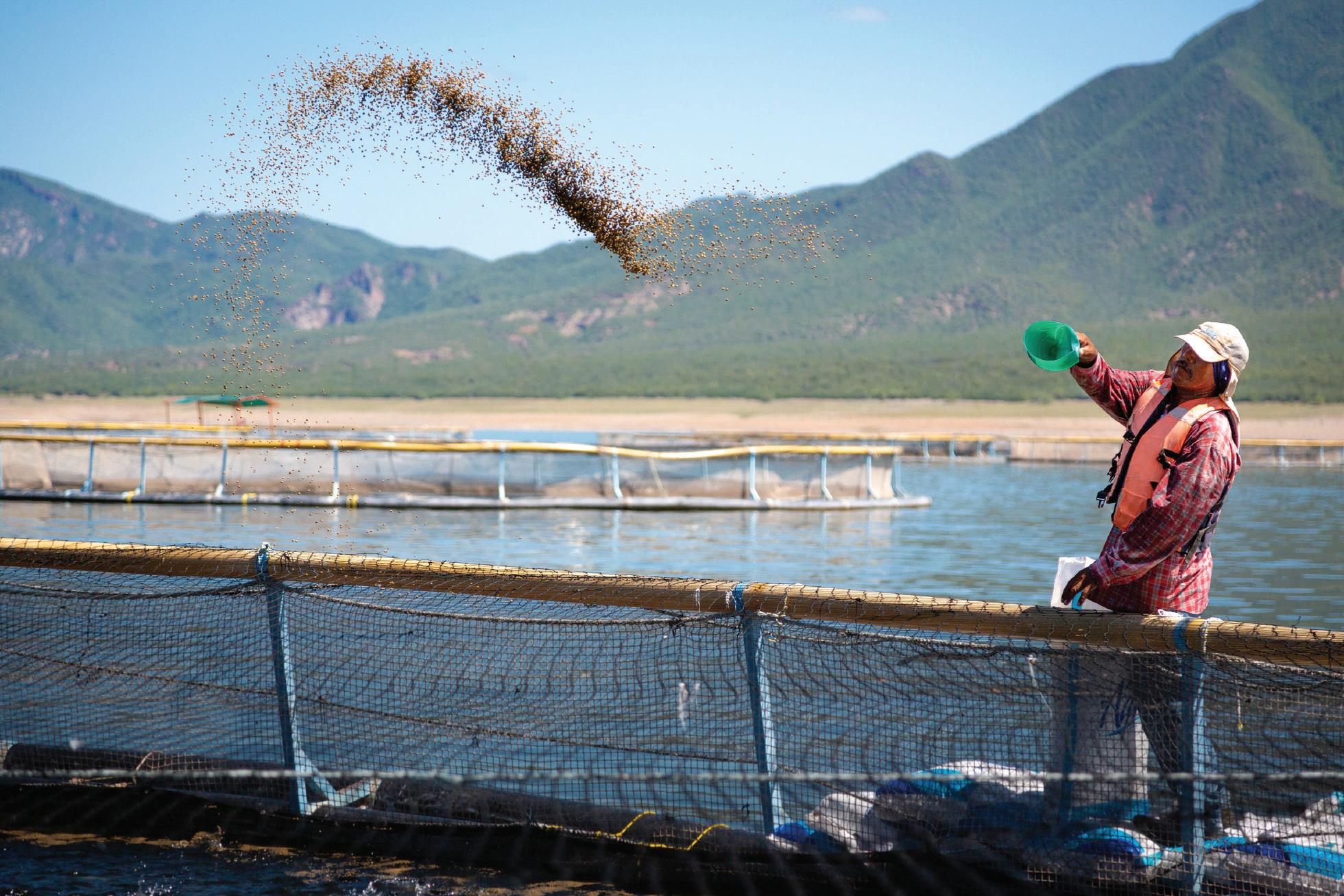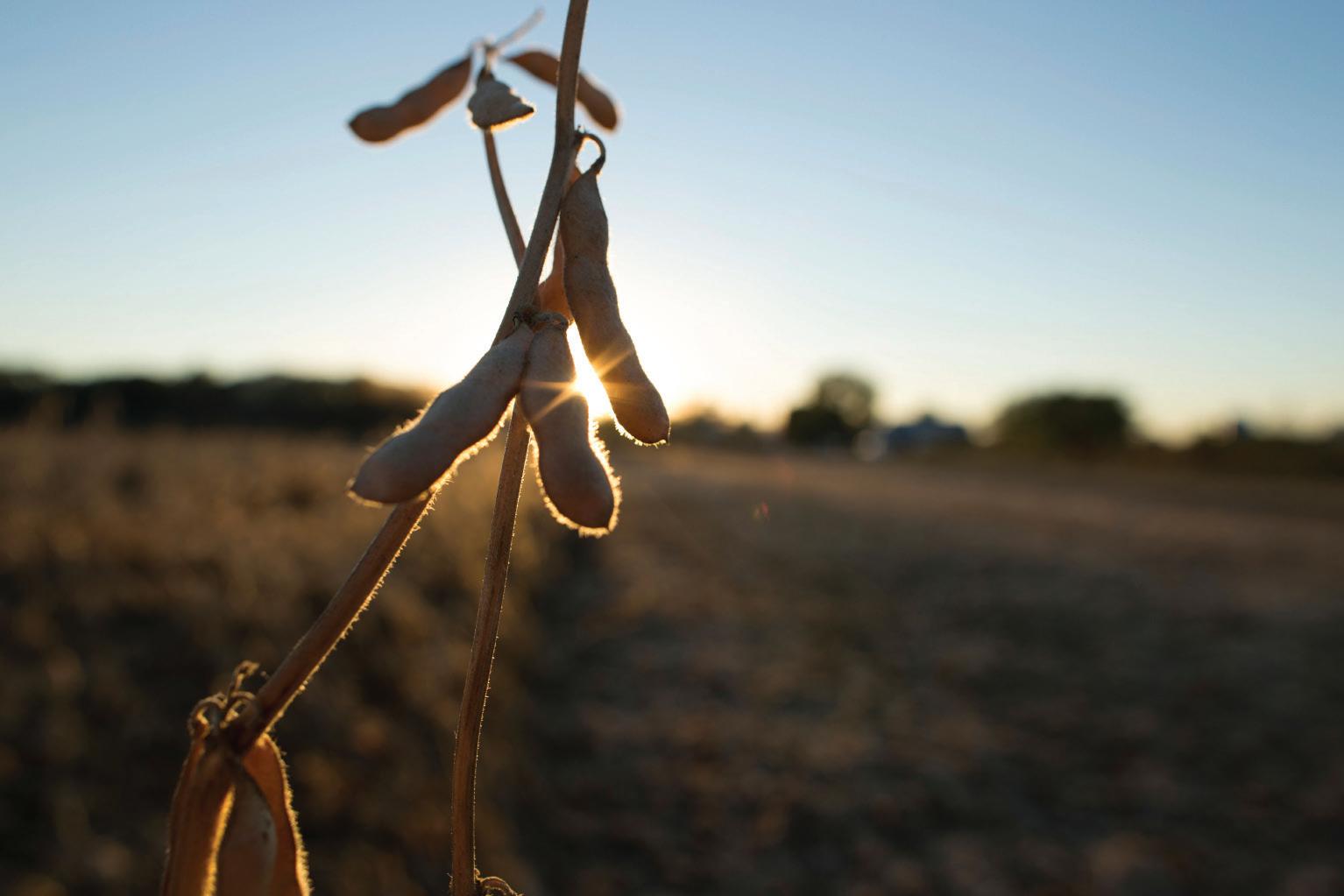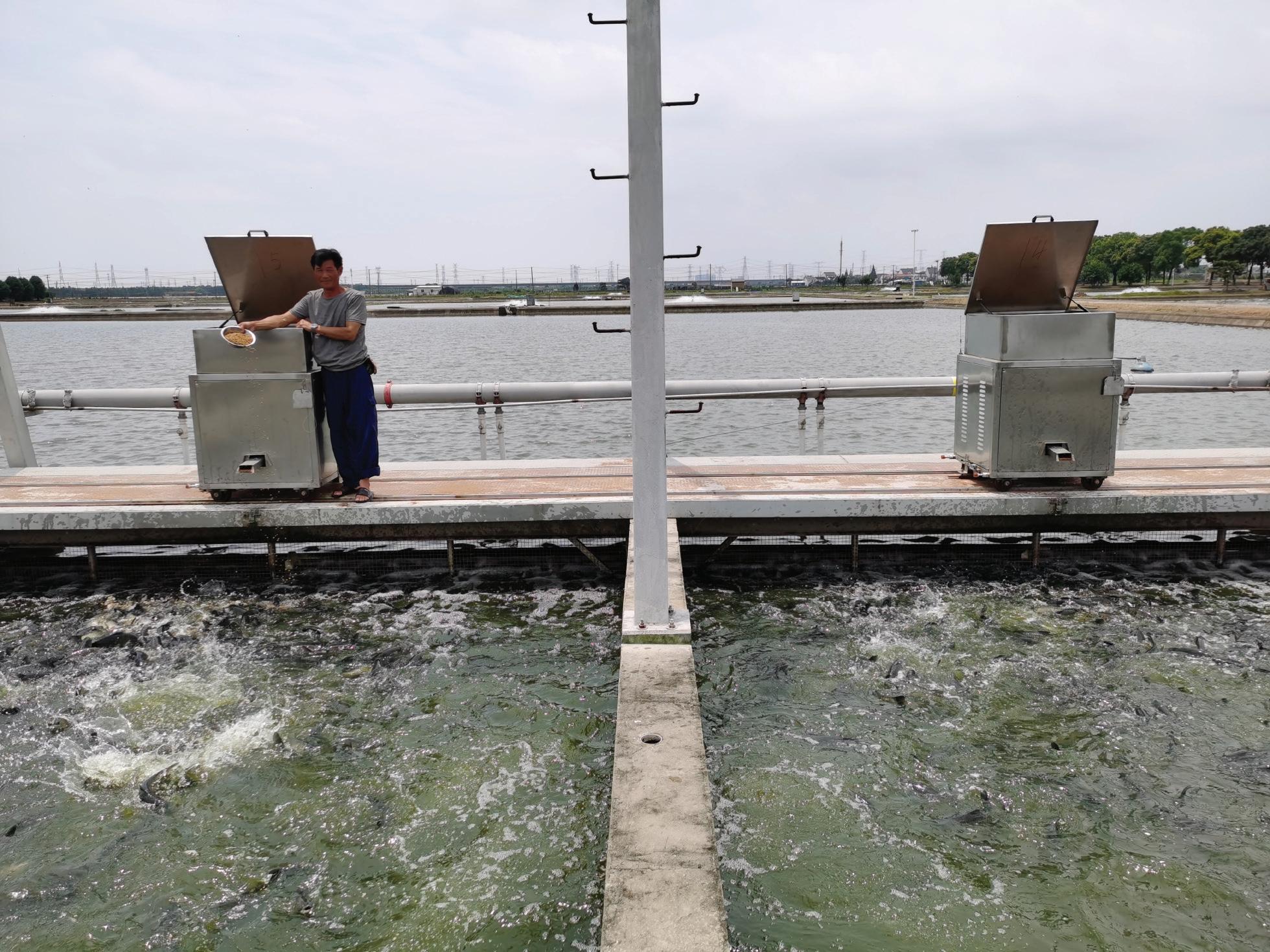
5 minute read
Soy in aquaculture
Lukas Manomaitis, Zhou (Joe) En Hua, U.S. Soybean Export Council (USSEC)
Photo credit: US Soybean Export Council.
Advertisement
Introduction
In the early days of feed-based aquaculture, farmers felt that they had an easy way to gauge the quality of their feeds. If it was dark in color and smelled like fish, then the feed was good. However, as we know now, the days of feed heavy on fishmeal and fish oil (and generally aquatic animal proteins and oils) are over. Fortunately, alternative and effective formulation approaches exist, and the industry is seeing more ingredients for aquaculture become available seemingly every day. Having said that, one ingredient has already taken a central role in aquaculture diets, and that ingredient is soy. The idea of soy in aquaculture diets is something that the United States soy industry has taken seriously for over 35 years, and through their international marketing arm, the U.S. Soybean Export Council (USSEC, www.ussec.org), they have conducted research, demonstrations and transferred the technical knowledge to make soy a central part of aquaculture today.
Soy, not just soybean meal
While soy is not the only ingredient needed to create aquaculture feeds, the unique properties of soy have made it a critical part of formulations today. Soy has a good amino acid profile, one of the highest protein densities for a row crop, and is available internationally year-round as it is grown in many locations. While many are familiar with soybean meal, soy also provides high protein substitutes (soybean protein concentrate and soy isolates), a lipid source (soy oil), a phospholipid source (soy lecithin), as well as other unique products
such as fermented soy products (which may provide functional properties). In combination with other ingredients, cost-effective and efficient feeds can be created that reduce or eliminate the need for ingredients like those coming from aquatic animals. Those aquatic animal-derived ingredients can then be better targeted to key life stages or species that really require them.
Sustainability is critical
The global need for more sustainable approaches is well understood, and the soy industry has already been in the lead of this effort. For example, the U.S. food and agriculture industry overall has a long-term view towards sustainable production, and specifically, U.S. soy farmers involved in this critical crop have already worked to make US soy one of the most sustainable ingredients currently available. Through the U.S. Soy Sustainability Assurance Protocol (SSAP, www.usses.org), the users of U.S. soy can obtain certified sustainable ingredients from U.S. soy with a certification program recognized by international aquaculture certification bodies like the Best Aquaculture Practices (BAP) program. BAP has already committed to requiring certified sustainable ingredients to be used in aquafeeds, with at least 50% of soy needing to be sourced from sustainable sources by July 1, 2022.
Supporting the aquaculture industry
From the beginnings of U.S. soy’s involvement in aquaculture, and particularly the work done together with the Chinese Extension service in the 1990’s to covert that nation’s aquaculture industry to a feedbased one, the U.S. soy industry has taken an industry approach to aquaculture. There has been a clear sense that improving the feed-based aquaculture production chain overall would yield better opportunities for soy. As a result, USSEC’s programs have worked to improve many parts of the aquaculture industry, some of which may not always seem directly linked to soy. These efforts have been diverse, and effective.
For example, with the production technology packages. Approaches such as “80:20” pond production, “Low Volume, High Density” (LVHD) cage culture, the “Offshore Cage Aquaculture Technology” (OCAT) all have helped producers improve their yields, profitability, and sustainability (see more at www.soyaqua.org). The most recent technology package, the “In Pond Raceway System” (IPRS) has become something that the global aquaculture industry has taken note of, enabling farmers to increase yield by 2-3 times from the same water volume, while maintaining water in ponds without needing to drain it between harvests, and provides significantly more operational control. There are now more than 7,000 IPRS raceway cells operating in China and hundreds more in operation in Latin America, the Middle East and other parts of Asia. Another example is the International Aquaculture Feed Formulation Database (IAFFD, www.iaffd.com). USSEC has collaborated with other aquaculture stakeholders to provide the first publicly available, commercially oriented, comprehensive aquaculture feed formulation database to industry. Containing over 500 ingredient standards and target nutrient specifications for over 30 important aquaculture species (including at different age classes for every species), this database is strongly supported by USSEC and is improving every year. This resource enables feed mills to benchmark their own commercial databases with another database, as well as providing in-house and general training opportunities for aquaculture feed formulators. Commercial feed
Soybeans ready for harvest. Photo credit: United Soybean Board.

formulation program providers such as Adifo’s Bestmix® and A-System’s Allix3 provide their customers with the IAFFD as a reference database.
Using soy in aquafeeds
As discussed, there are already many different types of soy ingredients that provide key nutrients for aquaculture formulations and soy ingredients are widely available and can be sourced from certified sustainable producers, such as through the U.S. Soy Sustainability Assurance Protocol (SSAP). But how does one determine how to use soy effectively and safely in aquaculture diets? Once again, the U.S. soy industry has been active in this space, doing the foundational work and research (internally, and determining the maximum amounts of various soy products that can be effectively and safely incorporated into feeds for different species at various life stages). With this information, formulators can have more confidence about soy inclusion levels, as when they know the maximum inclusion before there is a performance impact it allows them to quickly see if the amounts suggested in a feed formulation program are below those levels, and therefore safe and effective.

Continuous improvement
USSEC and the U.S. soy industry are always trying to be proactive as well. Aquaculture technology is always improving and feeds should also be improving in lockstep with industry. Feeds are not just a source of nutrients, but a production management tool. US soy has worked closely with industry “to promote a profitable and sustainable approach to aquaculture” through a better understanding of how soy can be a part of the solution and how feeds, in particular, can help.
More information: Lukas Manomaitis
Aquaculture Program Technical Contractor USSEC, Thailand E: LManomaitis@ct.ussec.org










